I have a document.
{
"errors" : [
{
"priority" : 3,
"category" : "aaa"
"other":"nothing"
},
{
"priority" : 4,
"category" : "bbb"
"other":"nothing"
},
{
"priority" : 2,
"category" : "ccc"
"other":"nothing"
},
{
"priority" : 3,
"category" : "ddd"
"other":"nothing"
},
{
"priority" : 2,
"category" : "eee"
"other":"nothing"
}
],
"file_name" : "xxx.json",
"vehicle_id" : "esdf",
"day" : "2022-03-08"
}
I execute a command with js client.
db.wty_test.aggregate({
$project: {
'_id': 0, 'errors.priority': 1, 'errors.category': 1, 'file_name': 1, 'vehicle_id': 1,
}
})
I get the result I want. The errors is an array containing objects.
The errors is an array containing objects.
Now I need to overwrite this command with java client(springboot-data-mongo). This is my java code.
import org.springframework.data.mongodb.core.MongoTemplate;
...
Aggregation aggregation = Aggregation.newAggregation(Aggregation.project("errors.priority", "errors.category", "file_name", "vehicle_id"));
mongoTemplate.aggregate(aggregation, "wty_test", HashMap.class).getMappedResults();
 The priority and category is not in errors.
The priority and category is not in errors.
How to use java to get the same result as js?
I try the nested.But it's not what I want.

